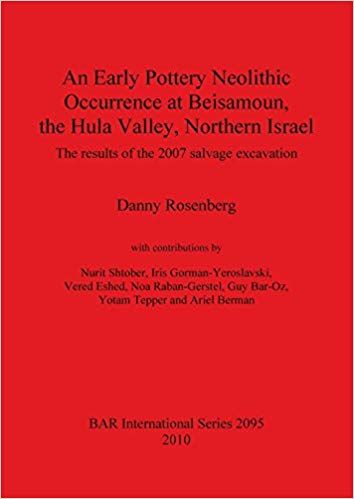Beisamoun
During the autmn of 2007 a large-scale salvage excavation was conducted at the western margins of the site of Beisamoun, in the Hula Valley, Northern Israel. Excavation was required due to the widening of the highway from Rosh Pina to Qiryat Shmona. Excavation at the western part of the greater area of the Beisamoun site, known for its Pre-Pottery Neolithic B finds, revealed mainly early Pottery Neolithic material. Ca. 300 square meters were exposed and ca. 285 cubic meters were excavated.
A large paved area was excavated, perforated with stone-filled pits, probably marking the margins of a hamlet. A large quantity of fractured and flaked local limestone, dolomite and basalt stones were a prominent feature; the meaning of this activity is not clear.
The finds included: 3216 pieces of worked flint (714 tools), 184 ground stone utensils (dominated by basalt),14 obsidian tools and debitage (originating in central Anatolia) and 173 pottery sherds. Human remains of four individuals were identified, two of which appear to be intentional, secondary burials in a pit. The faunal assemblage (N=148 identified bones) is dominated by cattle, sheep, goat and pigs–all domesticated–with gazelle significant as well. Later periods are represented by an unusual Hellenistic cremation burial (and coin), and Mamluk and Ottoman pottery sherds.
In general, it seems clear that this area was at the margins of the hamlet or village. Activities indicated include cultivation, herding, hunting and utilization of timber.
Danny Rosenberg has published a final report of the portion of the site excavated by Y.G. Contract Archaeology and Haifa University. To order An Early Pottery Neolithic Occurance at Beisamoun, The Hula Valley, Northern Israel (2010, Oxbow Books) click here.
